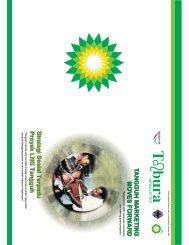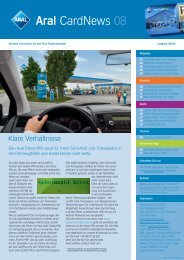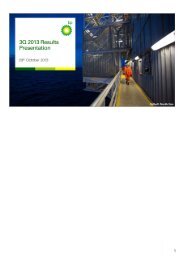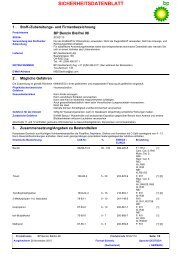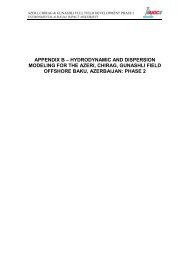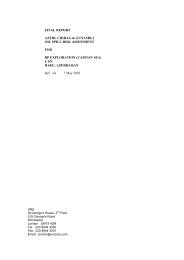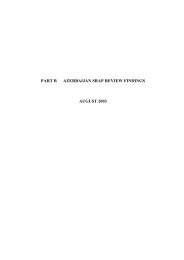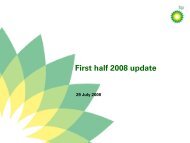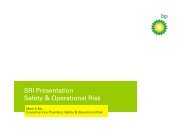Don Field Decommissioning Programme (pdf, 7.8MB) null - BP
Don Field Decommissioning Programme (pdf, 7.8MB) null - BP
Don Field Decommissioning Programme (pdf, 7.8MB) null - BP
You also want an ePaper? Increase the reach of your titles
YUMPU automatically turns print PDFs into web optimized ePapers that Google loves.
DON-<strong>BP</strong>-001<strong>Don</strong> <strong>Field</strong> <strong>Decommissioning</strong> <strong>Programme</strong>Therefore, it is considered that the potential seabed disturbance represents only a minorrisk. As there are no habitats of conservation interest in the vicinity of the <strong>Don</strong> <strong>Field</strong>, anddue to the transient nature of the impacts, there are not expected to be significantcumulative impacts.8 Discharges to Sea8.1 IntroductionThe two main sources of discharges to sea from <strong>Don</strong> decommissioning operations are: Cutting operations of the two umbilicals Well plugging and abandonment operationsUnder the Offshore Chemicals Regulations 2002, operators require a permit to use anddischarge chemicals. Operators need to assess the risks to the environment, whichmight arise from particular chemical use and discharge and are required to perform aformal risk assessment. <strong>BP</strong> will have all appropriate permits in place under the OffshoreChemicals Regulations prior to decommissioning operations taking place.<strong>BP</strong> actively seeks to minimise chemical use wherever possible, and uses chemicalswhich pose little or no risk to the environment, where suitable.8.2 Chemical Discharges8.2.1 Production and Water Injection PipelinesThe oil production and water injection pipelines form a continuous pigging loop from theThistle platform, to the <strong>Don</strong> manifold and back again. All chemicals used for flushing andcleaning operations, together with the current pipeline contents, were returned to theThistle platform where they entered the production separators for treatment prior todischarge overboard with produced water. Any separated oil and chemicals in the oilphase were exported to Sullom Voe together with Thistle produced fluids.A full chemical risk assessment was undertaken and appropriate permits put in placeprior to the pipeline flushing and cleaning operations.8.2.2 UmbilicalsWhen umbilicals are cut, chemicals remaining in the pipeline will be gradually dischargedto sea over a longer period of time. Table 9.2 presents the current known umbilicalinventories. Appropriate permits will be put in place prior to the umbilicaldecommissioning operation.8.2.3 Well Plugging and AbandonmentThere will be chemical discharges associated with well plugging and abandonmentoperations. Chemical releases will involve small discharges of completion fluids currentlyin the well annuli, and small discharges of the cementing chemicals used to plug andabandon the wells. Appropriate permits will be put in place prior to the well plugging andabandonment operation.Environmental Impact Assessment9-6 May 2011




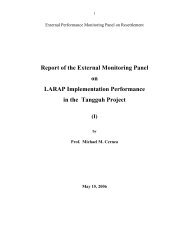
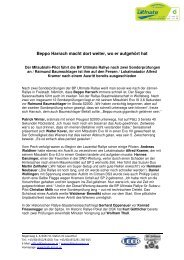
![[PDF] Deepwater Horizon: Accident Investigation Report - BP](https://img.yumpu.com/51697031/1/190x245/pdf-deepwater-horizon-accident-investigation-report-bp.jpg?quality=85)
